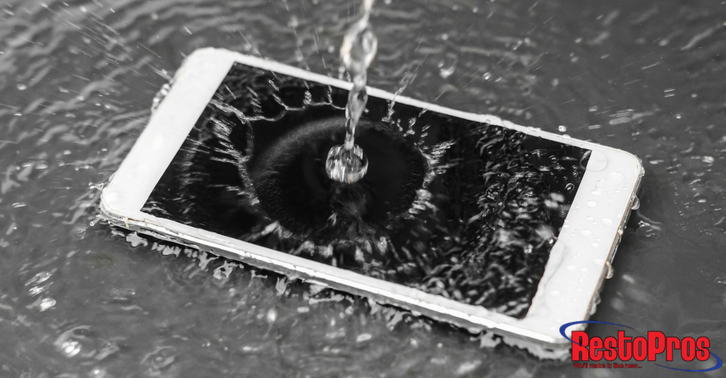 Let’s be clear, if your home has flooded, turn off power to the room before entering or working on the room. Switching the circuit breaker to the home is ideal as it will prevent you from accidental shock, death, or an electrical fire elsewhere in the home. Always call professional in immediately. The sooner you get a professional team in to help deal with the flooding and water damage, the less of an impact there will be on your life. Water damage is a race against time and fast action is key. This is true for smaller electrical devices as well, though you probably don’t need to call in a full team to fix a submerged MP3 player.
Let’s be clear, if your home has flooded, turn off power to the room before entering or working on the room. Switching the circuit breaker to the home is ideal as it will prevent you from accidental shock, death, or an electrical fire elsewhere in the home. Always call professional in immediately. The sooner you get a professional team in to help deal with the flooding and water damage, the less of an impact there will be on your life. Water damage is a race against time and fast action is key. This is true for smaller electrical devices as well, though you probably don’t need to call in a full team to fix a submerged MP3 player.
What to Do
If you find yourself with an electrical device that’s been submerged (anything from a phone to a laptop) you run the risk of permanent damage. Fortunately, a little swim may not be the end of your device’s usefulness. And our suggestion is not going to involve placing your phone in a bowl of rice (you’re better off letting the phone air dry under a fan).
Remove the Water
- Start by disconnecting any power sources. Items that were plugged into a wall may have been saved by the circuit breaker or a GFCI outlet, but that isn’t always the case. If the item has a battery, remove it immediately. Always be cautious about how you disconnect electrical devices. Do not stand in water or remove any cables with wet hands. This is why we recommend turning off home breakers first.
- Recycle the battery properly. Most batteries don’t handle water immersion well at all and should be recycled immediately. FI the battery itself is bubbling, smoking, or melting don’t chance it. Avoid handling the device if at all possible. Replacing your phone or laptop is better than having to seek medical care later.
- If by some miracle your device is still active, turn it off to prevent further damage.
- Shake the device and rotate it until you’ve emptied all the water out of the device.
- Disassemble the device if possible. Opening up the case will allow you to ensure that any excess water is gone and will give you easier access to the water sensitive components that need to dry.
Clean the Device
Especially if you’re dealing with acidic or caustic fluids such as fruit juice, you’ll want to clean out the device. Even water, if it’s simply allowed to dry, could rust or corrode some internal components.
- Disassemble the device completely and remove all connectors and plugs.
- Place the device in a large container where it can be completely covered in isopropyl alcohol. Use a concentration that’s at least 90% alcohol. In an emergency use distilled or de-ionozied water. The water option will take longer to dry and needs to be completely clean. Do not use solvent solutions of any kind.
- Use a small, soft brush to clean the logic board and components of any dust, debris, or other contaminants left behind.
- Place the device under a desk lamp and allow it to dry. A better method would be to place the device in front of a fan or use a hair dryer that’s set to ‘cool’ to dry out the device.
- Once everything is completely dry, inspect the electronic board for signs of corrosion.
If everything checks out, reassemble the device and install a new battery. Your device is now restored and ready to be used again!
Don’t forget to follow RestoPros on Facebook, Twitter, LinkedIn, and Google+ for new Updates, News, and Discounts
